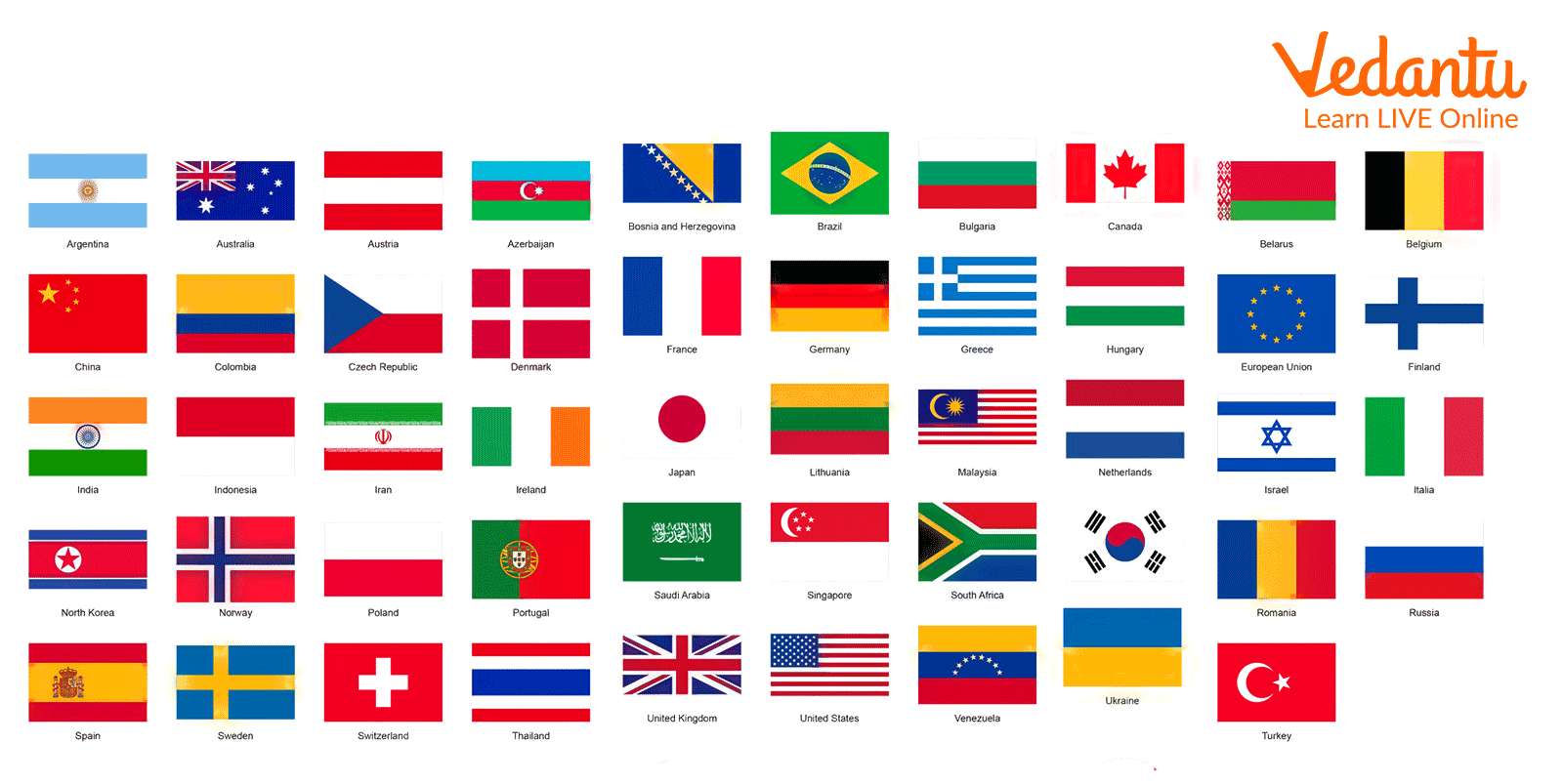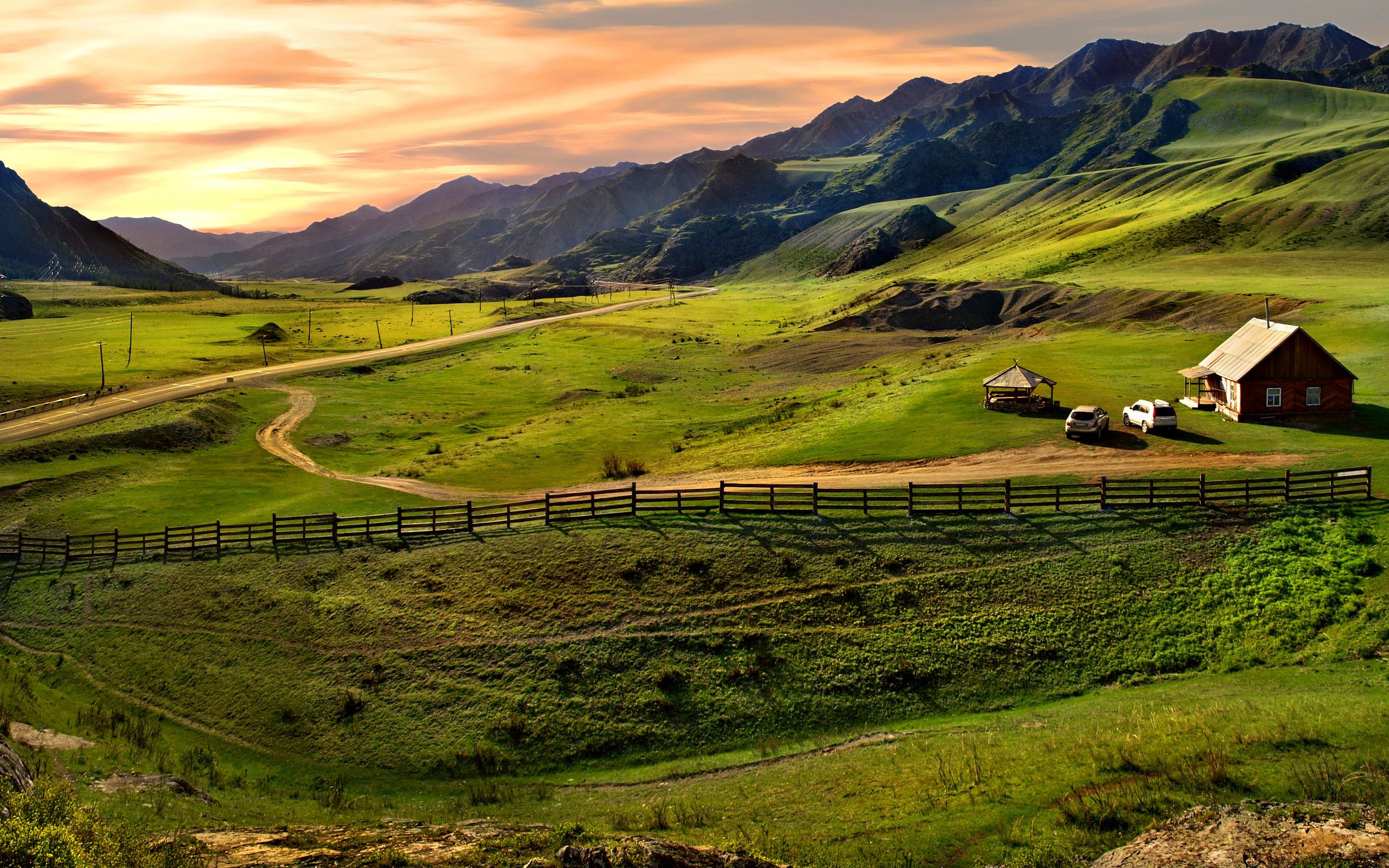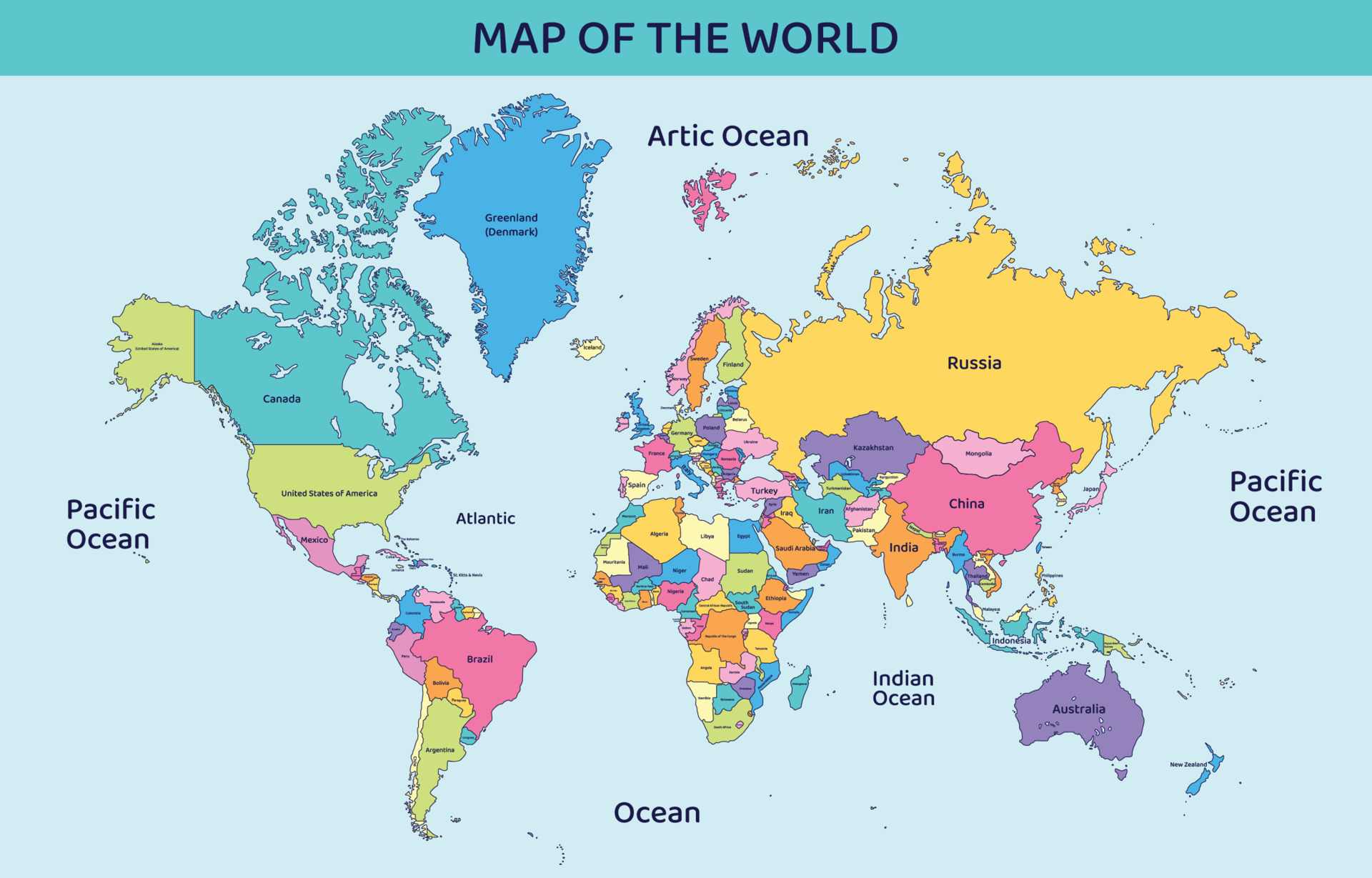Have you ever stopped to consider the vibrant splash of colors that makes up a nation's flag? It's really quite fascinating, you know, how a simple design can hold so much meaning and represent an entire people. When we think about flags, some color combinations just stand out, and one that often catches the eye is the striking mix of red, green, and yellow. It's a pretty common sight, more or less, in different parts of the world, and each instance tells its own unique story.
Many places, it turns out, display these particular hues on their national emblems. This isn't just a random choice; very often, these colors carry deep historical, cultural, or even geographical significance for the people who live there. So, when you spot a flag with red, green, and yellow, you're actually looking at a visual representation of a country's identity, its struggles, and its hopes, and that's just a little bit amazing.
We're going to take a closer look at this interesting color trio and discover which countries proudly wave a flag featuring red, green, and yellow. We'll also explore what these colors typically stand for and why so many different places have chosen them. It's quite a journey, really, into the heart of national symbols and the stories they tell about what country has a red green and yellow flag.
- Hilarious I Love You Memes
- Colleen Camp
- Victorian Names And Surnames
- Who Did Hannah From Below Deck Marry
- Snowden Wife
Table of Contents
- What is the Deal with Red, Green, and Yellow Flags?
- Which Countries Use Red, Green, and Yellow on Their Flags?
- How Do Countries Choose Their Flag Colors?
- The Meaning Behind the Hues of Red, Green, and Yellow
- A Closer Look at Specific Flags with Red, Green, and Yellow
- Do All Flags With These Colors Share a Common History?
- The Global Presence of Red, Green, and Yellow Flags
- Beyond the Colors - What a Flag Represents for a What Country Has a Red Green and Yellow Flag
What is the Deal with Red, Green, and Yellow Flags?
When you see a flag sporting red, green, and yellow, it's not just a random design choice; these colors frequently hold very specific, often powerful, meanings. You know, these particular shades have, in some respects, become almost synonymous with certain movements or geographical areas. For instance, in many parts of Africa, these colors are known as the Pan-African colors. They were inspired by the flag of Ethiopia, a nation that successfully resisted colonial rule, making its flag a symbol of independence and self-determination for many others on the continent. So, it's more than just a pretty pattern; it's a statement.
The symbolism behind these colors tends to be quite consistent across different cultures, though there can be subtle variations. Red, for instance, often stands for courage, the blood shed for freedom, or the warmth of the sun. Green usually represents the natural landscape, hope, or agricultural richness. Yellow, or sometimes gold, typically signifies wealth, the sun's brilliance, or prosperity. It's almost like a visual shorthand for a nation's aspirations and its connection to its land, which is pretty neat when you think about it for a what country has a red green and yellow flag.
Which Countries Use Red, Green, and Yellow on Their Flags?
There are quite a few places around the globe that feature red, green, and yellow on their national banners, which is interesting. One of the most famous examples, as I was saying, is Ethiopia, whose flag, as mentioned, inspired many others. Its design has changed a bit over time, but those core colors have remained, symbolizing its long and proud history. Then there's Bolivia, way over in South America, which also uses this color combination, though its meanings are tied to its own unique heritage and natural resources.
- Sober Before And After Photos
- Adventure Time Characters
- Bill Skarsg%C3%A5rd Tv Shows
- What Is Hannity Salary
- Blonde Comedians Female
Another country that comes to mind is Lithuania, in Europe, whose flag also has these three colors, but in a different arrangement and with meanings specific to its own journey. And, you know, if you look at the flags of many West African nations, like Ghana, Senegal, Mali, or Cameroon, you'll see the red, green, and yellow prominently displayed. This is because, as a matter of fact, they adopted these colors as a sign of solidarity and shared identity following their independence. It's a powerful visual link between them, isn't it, for a what country has a red green and yellow flag.
How Do Countries Choose Their Flag Colors?
Choosing the colors and design for a national flag is a really thoughtful process, you know. It's not just about picking pretty shades; every element is usually packed with meaning. Sometimes, the colors come from a nation's historical past, perhaps from a royal standard or a revolutionary banner. Other times, they might represent the country's geography, like green for its forests or blue for its waters. It's quite common, too, for the colors to symbolize the values or ideals a nation holds dear, such as peace, courage, or prosperity.
The decision often involves a lot of public discussion, and in some cases, it's tied to the very idea of what a "country" truly is. You see, the word "country" itself can mean different things depending on the situation, as some discussions about language show. Sometimes it refers to a "state" with full sovereignty, while other times it might be used more broadly to describe a "nation" or a geographical "territory." So, the flag, in a way, becomes a visual anchor for that collective identity, whatever the precise definition of the "country" might be. It's pretty fascinating, really, how something so simple can carry such a heavy weight of identity for a what country has a red green and yellow flag.
The Meaning Behind the Hues of Red, Green, and Yellow
Let's really dig into what these three colors often represent on a national flag. It's not just a random assortment; there's usually a deep-seated reason behind each choice. Red, for instance, is a color that speaks volumes. It's often associated with the sacrifices made for freedom, like the blood shed by those who fought for independence. It can also symbolize courage, strength, or even the passionate spirit of a people. In some cultures, red is tied to the sun's energy or the warmth of the earth, which is kind of interesting, isn't it.
Green, on the other hand, frequently points to the natural world. Think of lush landscapes, fertile lands, or abundant resources. It can also represent hope, growth, and renewal – a nation looking forward to a prosperous future. For many countries, especially those with rich agricultural traditions, green is a direct nod to the land that sustains them. It's a very grounding color, in a way, suggesting stability and a connection to the environment. It's almost like a promise of things to come for a what country has a red green and yellow flag.
Then we have yellow, which is quite often interchangeable with gold. This color is typically linked to wealth, prosperity, and the brightness of the sun. It can symbolize natural riches, like minerals or crops, or the general well-being and happiness of the people. Yellow often brings a sense of optimism and enlightenment to a flag's design. It's a color that catches the light, suggesting a bright future and the value of a nation's heritage. So, you see, these aren't just colors; they're stories told in fabric, which is really quite clever.
A Closer Look at Specific Flags with Red, Green, and Yellow
Let's consider a couple of specific examples to really see how these colors play out. Take Ethiopia, for instance. Its flag, as I was saying, is a powerful symbol. The green stripe at the top represents the land and its fertility, and also hope. The yellow middle stripe stands for peace, harmony, and the country's natural wealth. And the red stripe at the bottom signifies strength, the sacrifices of its people, and their determination. In the center, there's a blue disk with a yellow pentagram, representing unity and diversity, and a bright future. It's a flag that tells a very clear story of resilience and aspiration, which is pretty cool.
Now, let's look at Bolivia's flag. It also uses red, yellow, and green, but in horizontal stripes. The red top stripe symbolizes the courage of its soldiers and the blood shed for the country's birth. The yellow middle stripe represents the nation's mineral wealth, like its gold and silver. And the green bottom stripe stands for the richness of its natural environment and hope. Sometimes, the national coat of arms is placed in the center, adding even more layers of meaning. It's interesting how the same colors can convey different, yet equally significant, messages depending on the country, isn't it, for a what country has a red green and yellow flag.
Do All Flags With These Colors Share a Common History?
It's a good question, you know, whether all flags with red, green, and yellow are somehow connected historically. The answer, as a matter of fact, is both yes and no, which might seem a little confusing. For many African nations, there's a very clear shared history. They adopted these colors, often called the Pan-African colors, as a nod to Ethiopia's resistance to colonialism. Ethiopia, having maintained its independence, became a beacon of hope, and its flag's colors were embraced by newly independent African states as a symbol of unity, liberation, and a shared heritage. So, in that respect, there's a strong, common thread.
However, places like Bolivia or Lithuania, which also use red, green, and yellow, have entirely different historical origins for their flag designs. For them, the colors are tied to their own unique national narratives, historical events, or geographical features. Lithuania's flag, for example, has meanings rooted in its own distinct cultural and political journey, completely separate from the Pan-African movement. It just so happens that they arrived at the same color combination through different paths. It's a bit like how the word "country" itself can have different shades of meaning – sometimes referring to a sovereign "state," sometimes to a "nation" with shared culture, or just a geographical "territory," as some language discussions point out. The visual symbol, the flag, helps define that particular entity, regardless of the linguistic nuances, for a what country has a red green and yellow flag.
The Global Presence of Red, Green, and Yellow Flags
It's quite remarkable, really, how far and wide you can find flags featuring red, green, and yellow. They're not just confined to one continent or region; they pop up in various corners of the world, which is pretty cool. As we've discussed, a significant number of these flags are found in Africa, serving as a powerful visual testament to the Pan-African movement and the continent's journey towards self-rule. These flags stand out, often symbolizing a collective spirit of independence and shared destiny. It's a very visible family of flags, you could say.
But beyond Africa, you'll find them in South America, with Bolivia being a prime example, and in Europe, with Lithuania. This broad distribution highlights how certain color combinations can resonate across different cultures and histories, even if the specific reasons for their adoption vary. Each one, you know, tells a story of a place and its people, making the global collection of flags a truly rich and varied display of human experience. It's almost like a secret code of colors that speaks across borders, which is really quite something for a what country has a red green and yellow flag.
Beyond the Colors - What a Flag Represents for a What Country Has a Red Green and Yellow Flag
While the colors themselves are important, a flag, in its entirety, represents so much more than just a combination of hues. It's a potent symbol of a country's very existence, its identity, and its place in the world. When people see their national flag, it often evokes feelings of pride, belonging, and shared purpose. It's a visual shorthand for everything that makes a "country" what it is – its history, its culture, its people, and its future. You know, it’s a powerful thing, really, to see your nation’s emblem waving high.
Whether it's a flag with red, green, and yellow, or any other combination, it serves as a unifying emblem. It's something that citizens can rally around, a visual representation of their collective journey. It helps define that entity we call a "country," giving it a recognizable face on the international stage. So, while we might talk about the technical definitions of "country" versus "state" or "nation," the flag, in a way, cuts through all that. It simply says: "This is who we are," and that's a pretty clear message for a what country has a red green and yellow flag.
Related Resources:



Detail Author:
- Name : Elvis Deckow
- Username : shanelle.okeefe
- Email : tbashirian@hotmail.com
- Birthdate : 1974-07-12
- Address : 627 Verda Unions Suite 699 New Myleneside, NE 88186
- Phone : (657) 442-4463
- Company : Beatty-Pagac
- Job : Automotive Glass Installers
- Bio : Ipsam vel provident rerum non delectus. Nemo quo ipsam molestiae. Sunt doloribus facilis repellat facilis reprehenderit temporibus. Ut rerum impedit rerum.
Socials
twitter:
- url : https://twitter.com/monte_id
- username : monte_id
- bio : Accusamus nam et iusto. Quod voluptatem laborum sit quam molestiae voluptatem labore.
- followers : 4033
- following : 1884
linkedin:
- url : https://linkedin.com/in/monte_jacobson
- username : monte_jacobson
- bio : Amet ex excepturi ea eligendi dolorem.
- followers : 6823
- following : 1581
instagram:
- url : https://instagram.com/monte.jacobson
- username : monte.jacobson
- bio : Aliquam qui sunt cupiditate inventore voluptatem occaecati. Deleniti similique molestiae rerum in.
- followers : 3226
- following : 1414
tiktok:
- url : https://tiktok.com/@monte.jacobson
- username : monte.jacobson
- bio : Quidem et et accusantium dolorum mollitia doloremque omnis.
- followers : 753
- following : 1652
facebook:
- url : https://facebook.com/montejacobson
- username : montejacobson
- bio : Et rerum illo temporibus enim magni occaecati.
- followers : 4456
- following : 1188